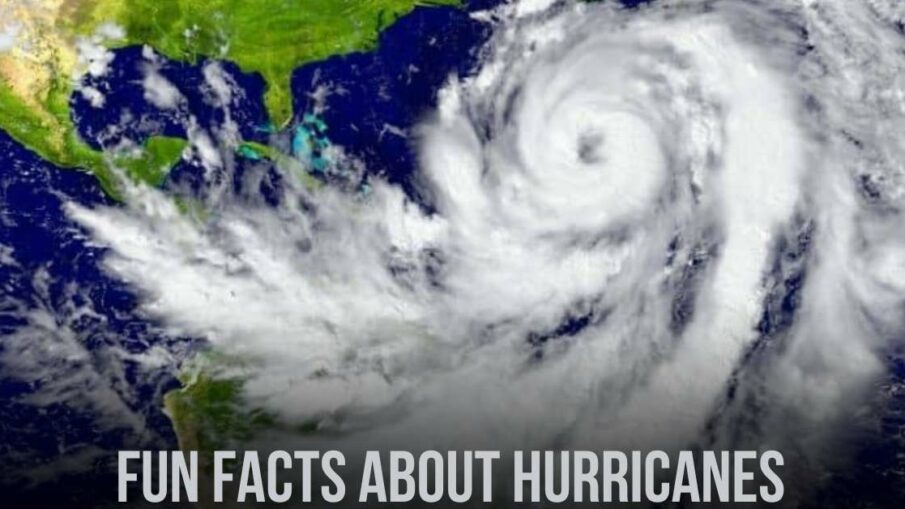Hurricanes and tornadoes are forces of nature that have both captivated and terrified humans for generations. While they share the ability to wreak havoc, these weather phenomena are as distinct as night and day. Join us on a journey to uncover the fascinating differences and similarities between hurricanes and tornadoes, as we delve into the captivating world of meteorology.
Tornadoes: Nature’s Fickle Fingers
-
Tornado Season Isn’t Set in Stone
- Tornadoes don’t always adhere to a specific calendar. While tornado season typically spans from April to June in the Midwest, they can strike at any time of year. Learn about a deadly December tornado in Mississippi that defied the norm.
-
Tornadoes: A Global Phenomenon
- Contrary to popular belief, tornadoes can occur anywhere in the world. However, a whopping 75% of them touch down in the United States, with Tornado Alley and Dixie Alley being infamous hotspots.
-
The US Sees Over 1,000 Tornadoes Annually
- Discover how many tornadoes the United States experiences on average and why not all of them are equally destructive.
-
The Incredible Power of Tornadoes
- Wind speeds in tornadoes can range from 65 mph to a jaw-dropping 300 mph. Learn what distinguishes a storm from a tornado and why the strongest tornadoes are truly terrifying.
-
Supercell vs. Non-Supercell Tornadoes
- Understand the difference between supercell and non-supercell tornadoes, and why the former can be the most deadly.
-
The Enhanced Fujita Scale
- Explore the Enhanced Fujita Scale, which classifies tornadoes based on their wind speed. From EF0 to EF5, discover how the scale helps us understand the severity of these destructive forces.
-
Tornado Outbreaks: Nature’s Fury Unleashed
- How do tornado outbreaks occur, and why do they pose a significant threat to communities? Learn about the science behind multiple tornadoes forming in a single day.
-
Debris Balls: Deadly Whirlwinds
- Delve into the terrifying phenomenon of debris balls and how they amplify the destruction caused by tornadoes.
-
The Rare Anticyclonic Tornadoes
- In a world where most tornadoes spin counterclockwise (or clockwise in the Southern Hemisphere), discover the rare anticyclonic tornadoes and why they’re less common but intriguing.
-
Tornado Alleys: Where Nature’s Fury Reigns
- Explore Tornado Alley and Dixie Alley, the regions in the United States where tornadoes frequently strike due to specific weather conditions.
Hurricanes: Nature’s Wrath Unleashed
-
Hurricane by Any Other Name
- Uncover why hurricanes go by different names in various parts of the world and how these mighty storms are classified as typhoons, cyclones, or hurricanes.
-
The Saffir-Simpson Hurricane Wind Scale
- Learn about the Saffir-Simpson Hurricane Wind Scale, which rates hurricanes from Category 1 to Category 5 based on their wind speeds, and why it doesn’t account for other deadly factors.
-
The Perfect Recipe for Hurricanes
- Explore the essential ingredients for hurricane formation, including warm ocean water and moist air, and understand why coastal regions are particularly vulnerable.
-
Hurricane Speed: Racing Towards Destruction
- Delve into the speed at which hurricanes travel and why meteorologists closely monitor their trajectories to predict landfall accurately.
-
The Eye of the Storm: Eyewalls
- Uncover the mysterious eye of a hurricane, its contrasting conditions, and the menacing eyewall, where the storm’s most intense winds and rain reside.
-
Tornadoes within Hurricanes
- Discover the unexpected connection between hurricanes and tornadoes, how and where these mini-twisters form within these colossal storms.
-
Storm Surges: Coastal Inundation
- Explore the peril of storm surges, abnormal ocean water rises near the coast, and understand why they can be even deadlier than hurricane winds.
-
Infrastructure and Power Grid Damage
- Hurricane aftermath isn’t just about wind and rain. Find out how these storms can cripple power grids and infrastructure, posing immense challenges for recovery.
-
Hurricane’s Far-reaching Impact
- Hurricanes are vast in size, affecting areas far beyond their centers. Learn how their extensive reach can exacerbate damage, especially through flooding.
-
Climate Change and Hurricanes
- Understand how climate change is reshaping the world of hurricanes, making them more frequent, intense, and deadlier.
Conclusion: A Career in Meteorology
If you’re as fascinated by the power of hurricanes, tornadoes, and other weather events as we are, consider a career in meteorology. Central Michigan University’s certified meteorology program, backed by the National Weather Service, can prepare you for a thrilling career studying the wonders and challenges of the Earth’s atmosphere. Reach out to our admissions team today to start your journey into the captivating world of meteorology.
In a world where nature’s fury and beauty collide, understanding these weather phenomena is not just a pursuit of knowledge but also a means of safeguarding lives and communities. As we continue to explore the intricate workings of our planet’s atmosphere, we find ourselves ever more humbled by its power and complexity.


Leave a Reply